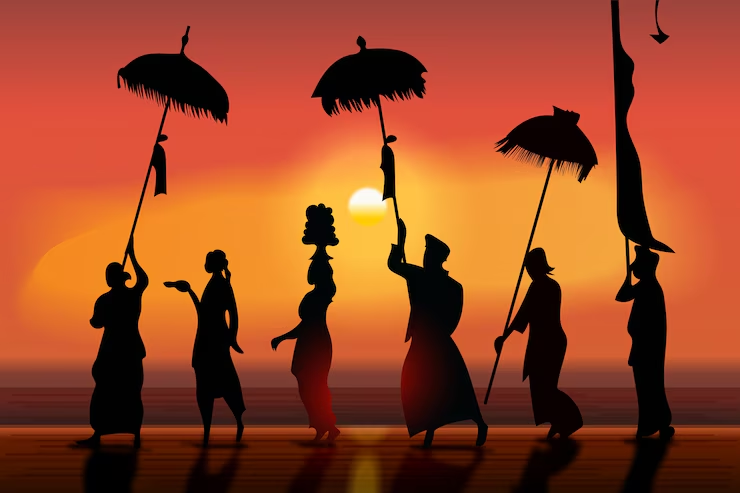Tsunaihaiya: Echoes of Silence and the Soul of the Sea
There is a word that sounds like wind against ancient rocks,
Like waves humming lullabies to the moon.
Tsunaihaiya—not merely a sound,
But a memory, a song, a soul carried on water.
What is Tsunaihaiya?
Some words are born from silence.
Tsunaihaiya is one such word.
An echo from the coastal hearts of Japan,
It doesn’t translate easily—
Because it wasn’t meant to.
It lives in feeling, not in language.
Tsunaihaiya is a chant, a call,
An ancient work song of fishermen and laborers
Who moved with the rhythm of sea and sky?
It is the breath before dawn,
The harmony of hands pulling nets and hearts beating as one.
A Song From the Deep: Origins of Tsunaihaiya
Centuries ago, on remote Japanese shores,
Fisherfolk rose with the sun and sang with the sea.
They toiled, but they did not toil alone.
Voices merged—strong, steady, sacred.
And from their rhythm came a chant:
“Tsunaihaiya!”
A cry of unity.
A beat of belief.
A reminder that even in hard labor, there is a song.
The Meaning Beyond the Meaning
To call tsunaihaiya a work chant would be true,
But not whole.
It is breath passed down like inheritance.
It is culture-laced with melody.
It is sorrow softened by song,
And hope rising like a tide that never forgets.
Why Tsunaihaiya Still Matters Today
In our world of hurried steps and lonely screens,
The idea of shared effort, of communal rhythm,
Feels like a forgotten hymn.
But Tsunaihaiya whispers,
Even now:
We are meant to move together.
To pull the ropes of life as one.
To lift each other’s burdens with breath and song.
The Music of Movement
Imagine hands blistered from salt and rope,
Hearts are heavy with the weight of survival.
Then imagine those same hands
Moving in sync with others,
Voices calling out:
What was hard became holy.
What was lonely became lyrical.
A Cultural Gem Hidden in Plain Sight
Japan’s folklore is filled with echoes—
But tsunaihaiya is not merely folklore.
It is a living heritage.
It has been woven into traditional performances,
Revived in festivals,
And reimagined in music and art.
Its rhythm has found its way into the bones of Japan,
And still, it sings to those who listen.
A Spiritual Chord Between Earth and Sea
The sea gives, but it also takes.
And in this tension,
Tsunaihaiya was born.
A spiritual spell, perhaps,
To tame the waves,
To bless the catch,
To bind human fragility to the eternal flow.
Resonance Across Borders
Even if you’ve never heard the chant,
You’ve felt its truth.
Whenever people work together—
Lifting, rowing, building—
And find harmony in hardship,
That’s tsunaihaiya in disguise.
It belongs to all of us.
Because it came from the deep part of being human.
Modern Echoes in a Mechanical World
Today, machines hum instead of voices.
Automation has stolen the song.
But in remote villages, in cultural centers,
And within hearts that remember—
Tsunaihaiya breathes.
Artists sample its rhythm.
Dancers move to their own pulse.
Elders teach it as a lullaby,
Not to forget who we are
When we move as one.
Tsunaihaiya as a Metaphor for Life
Life is a net we haul together.
It’s a sea both cruel and kind.
And tsunaihaiya is the reminder
That we are strongest
When we share the weight.
It teaches us:
Even labor can be art.
Even pain can be harmony.
Why We Need Tsunaihaiya Now More Than Ever
In the age of isolation and self-centered pursuits,
We crave connection.
We ache for that long-lost feeling
Of being in sync with another soul.
Tsunaihaiya calls us back—
Not to the sea, necessarily—
But to each other.
Learning from the Ancients
They didn’t have microphones.
They didn’t need applause.
They had rhythm.
And that was enough.
Let’s learn from them.
Let’s move like them.
Let’s sing, even if no one hears.
How You Can Keep the Chant Alive
- Listen to traditional Japanese folk music
- Attend cultural festivals celebrating work songs
- Support artists who revive heritage sounds
- Create something inspired by shared effort
- Chant when you work—feel your rhythm rise
Conclusion: When the Sea Sings Back
Tsunaihaiya is more than a word.
It’s a world.
A world where every voice matters,
Where every struggle finds a rhythm,
And where even silence has a melody.
So next time life feels heavy,
Close your eyes and whisper:
“Tsunaihaiya.”
Maybe the sea will sing back.
FAQs
1. Is tsunaihaiya still used in modern-day Japan?
Yes, especially in traditional performances and cultural preservation efforts in certain regions.
2. What language does tsunaihaiya come from?
It originates from old Japanese dialects, used in fishing and agricultural communities.
3. Can I hear recordings of tsunaihaiya chants?
Yes! Search for Japanese work songs or traditional chants—especially from Okinawa or Kyushu.
4. Is there a modern equivalent to tsunaihaiya?
Any collective rhythm in teamwork, like rowing chants or protest songs, can be seen as spiritual descendants.
5. How can I honor or share this cultural legacy?
By learning about it, sharing its story, and embracing its spirit of unity in your own life.
